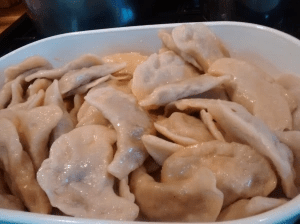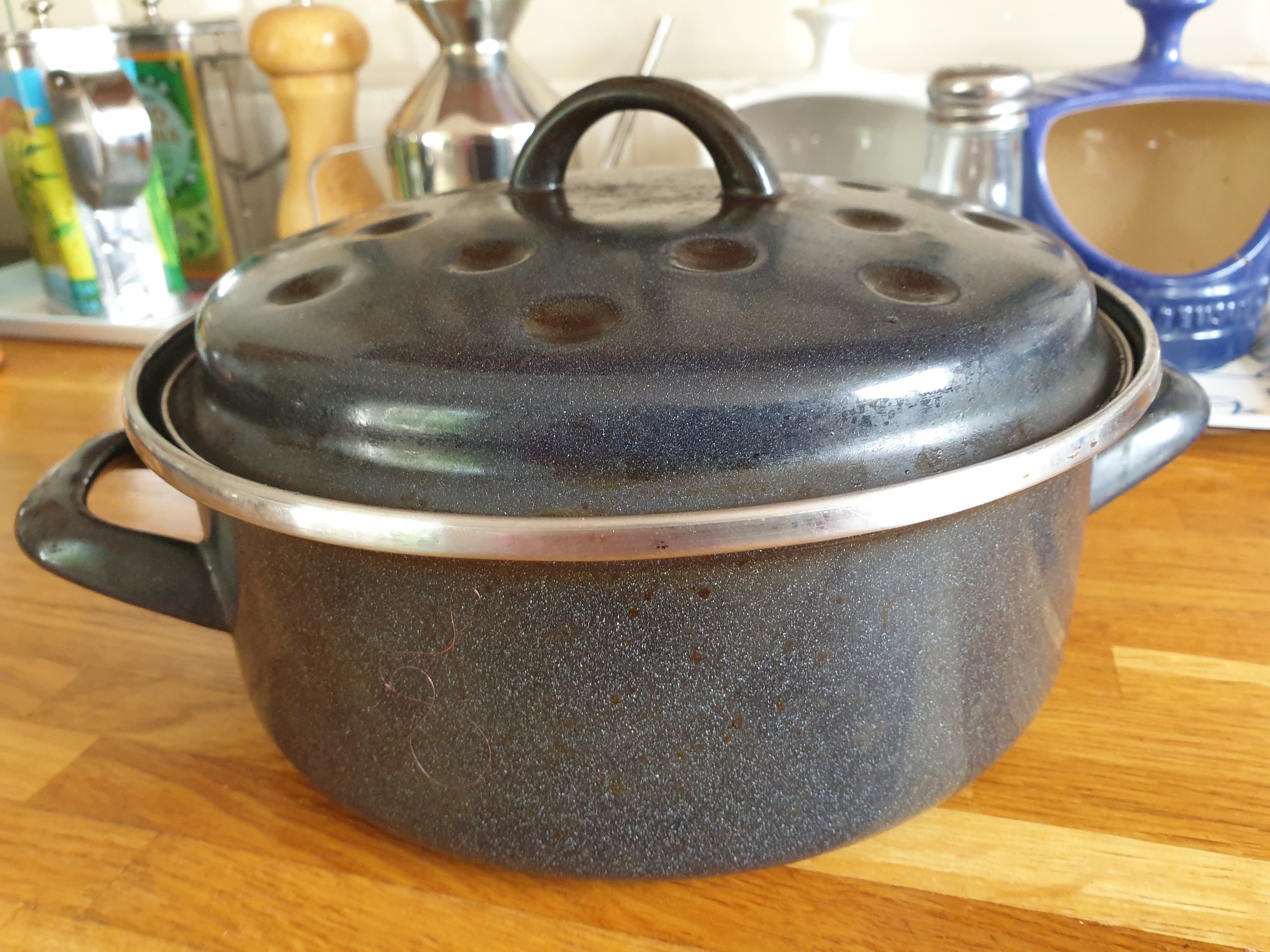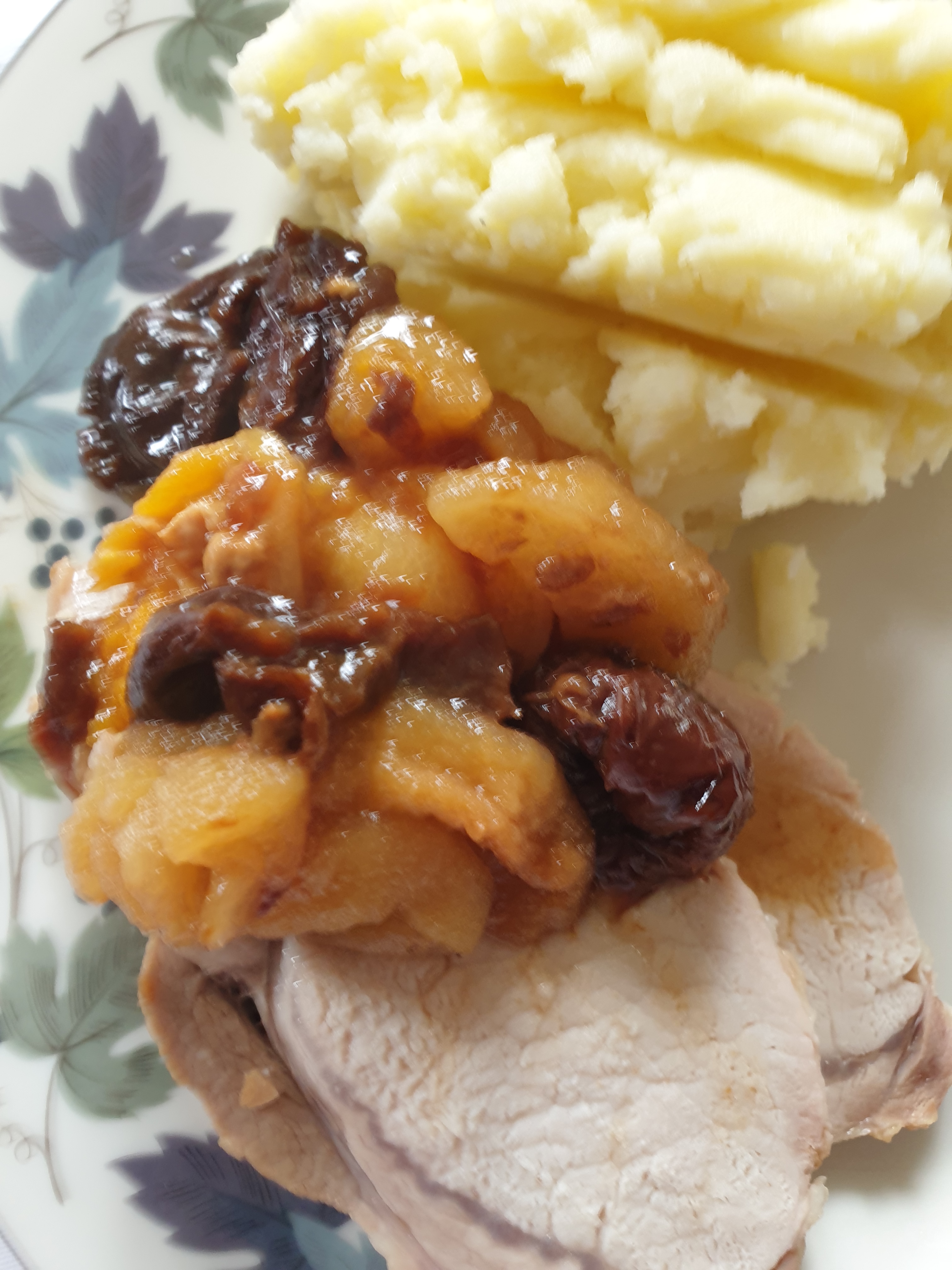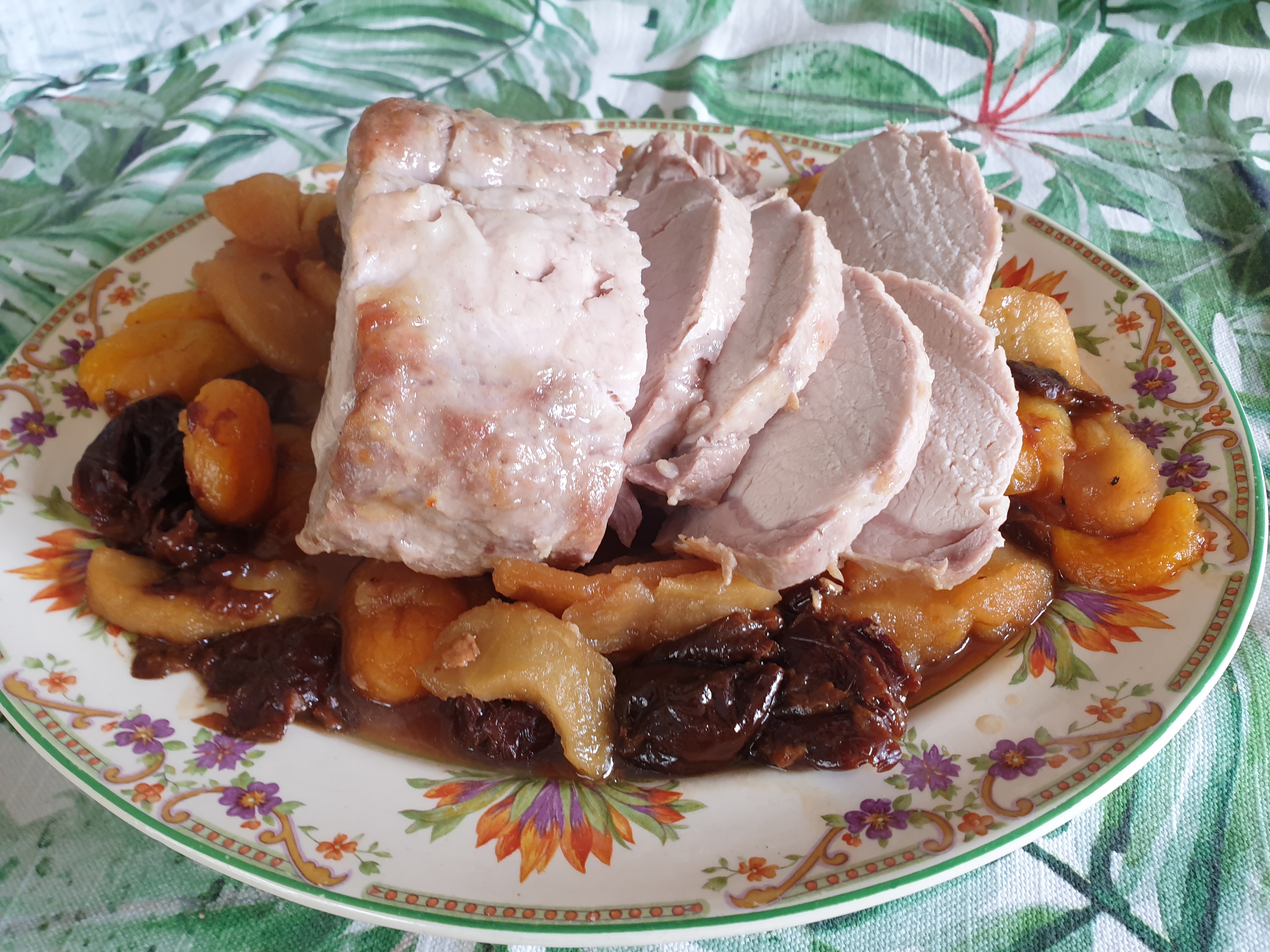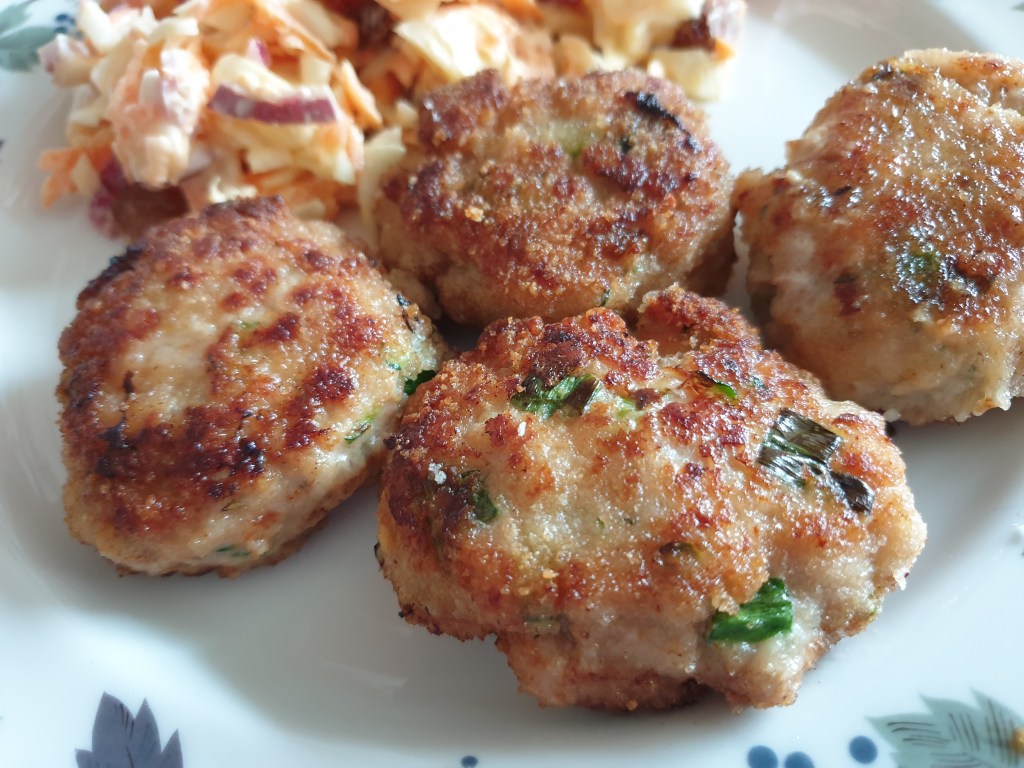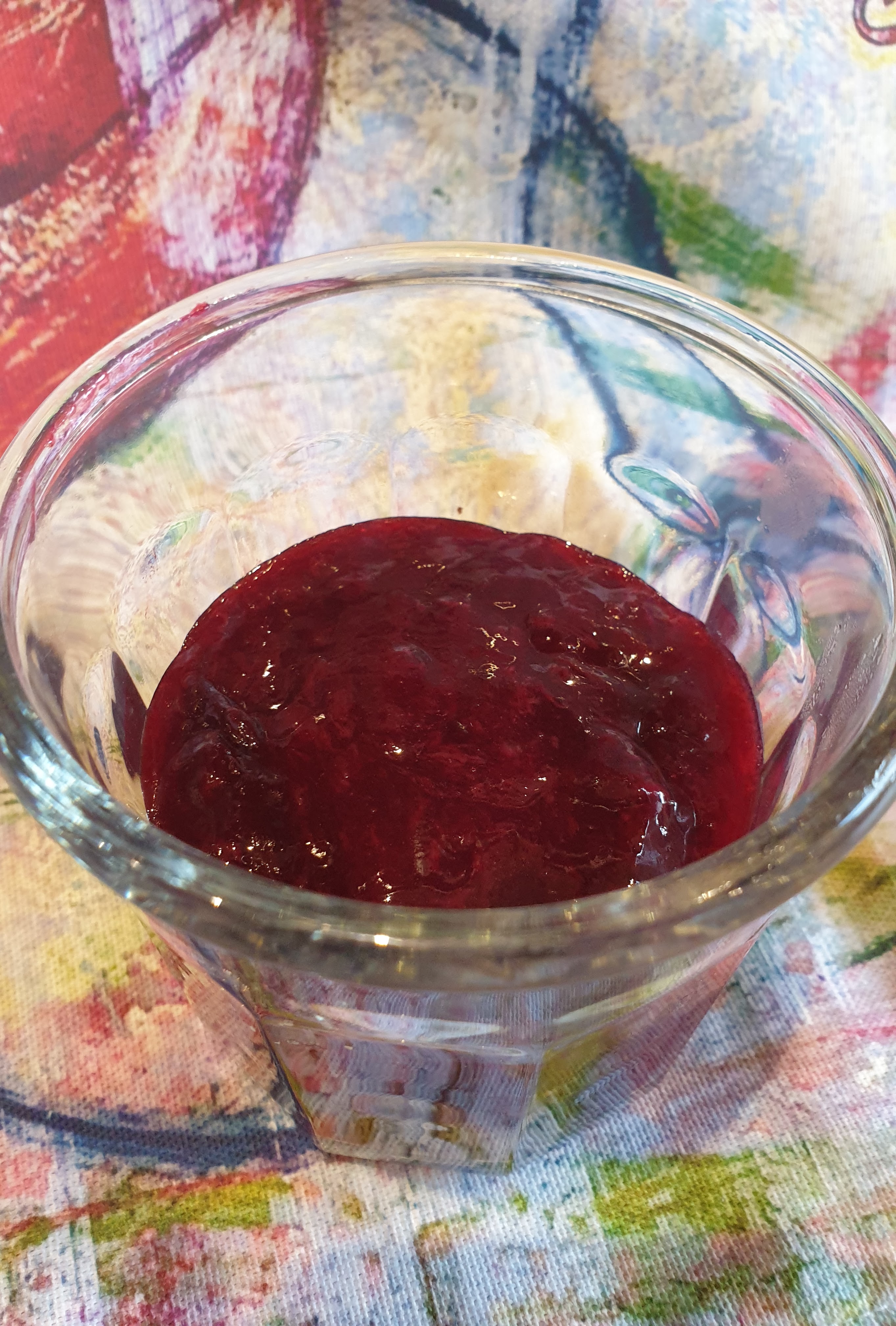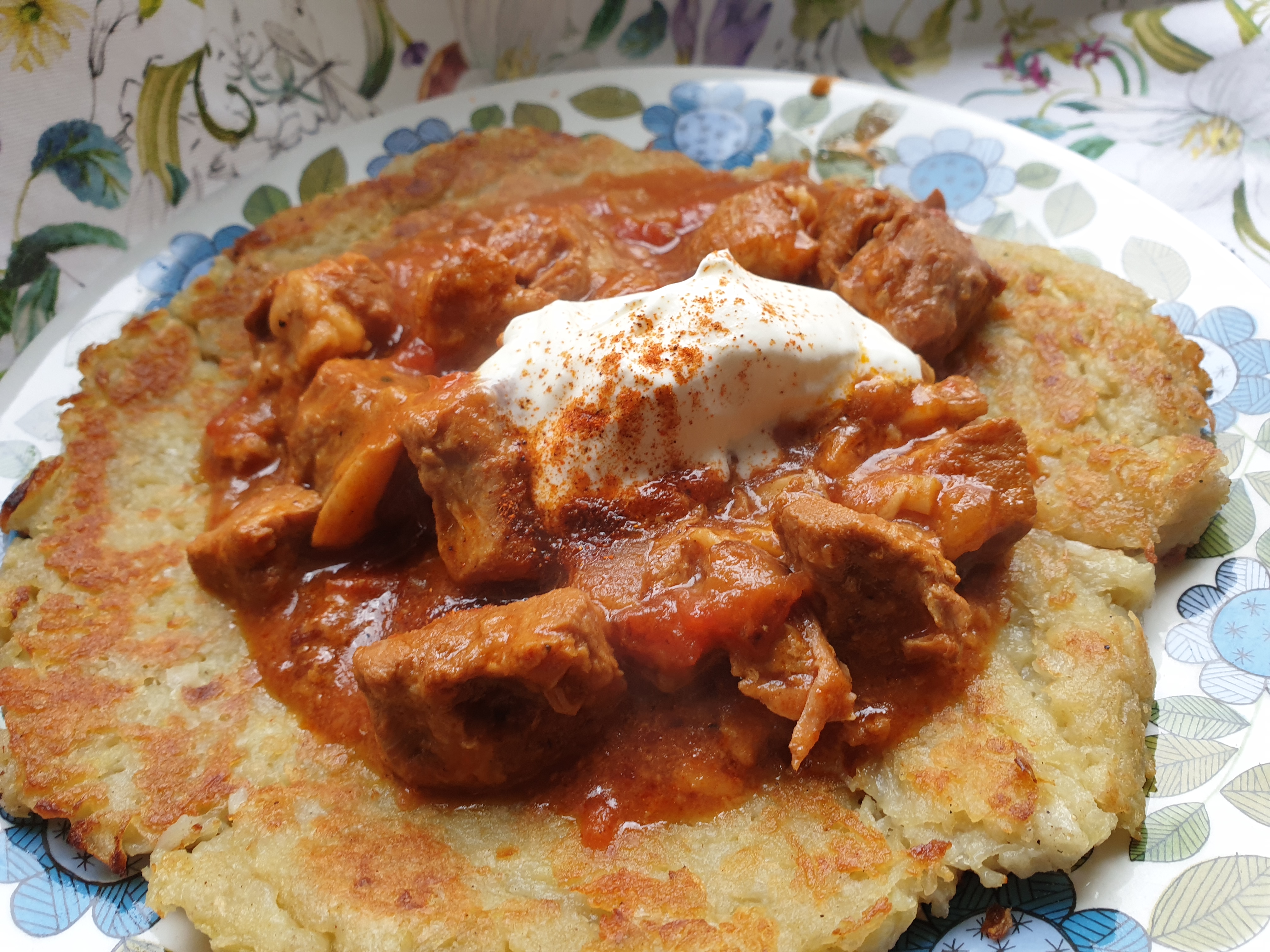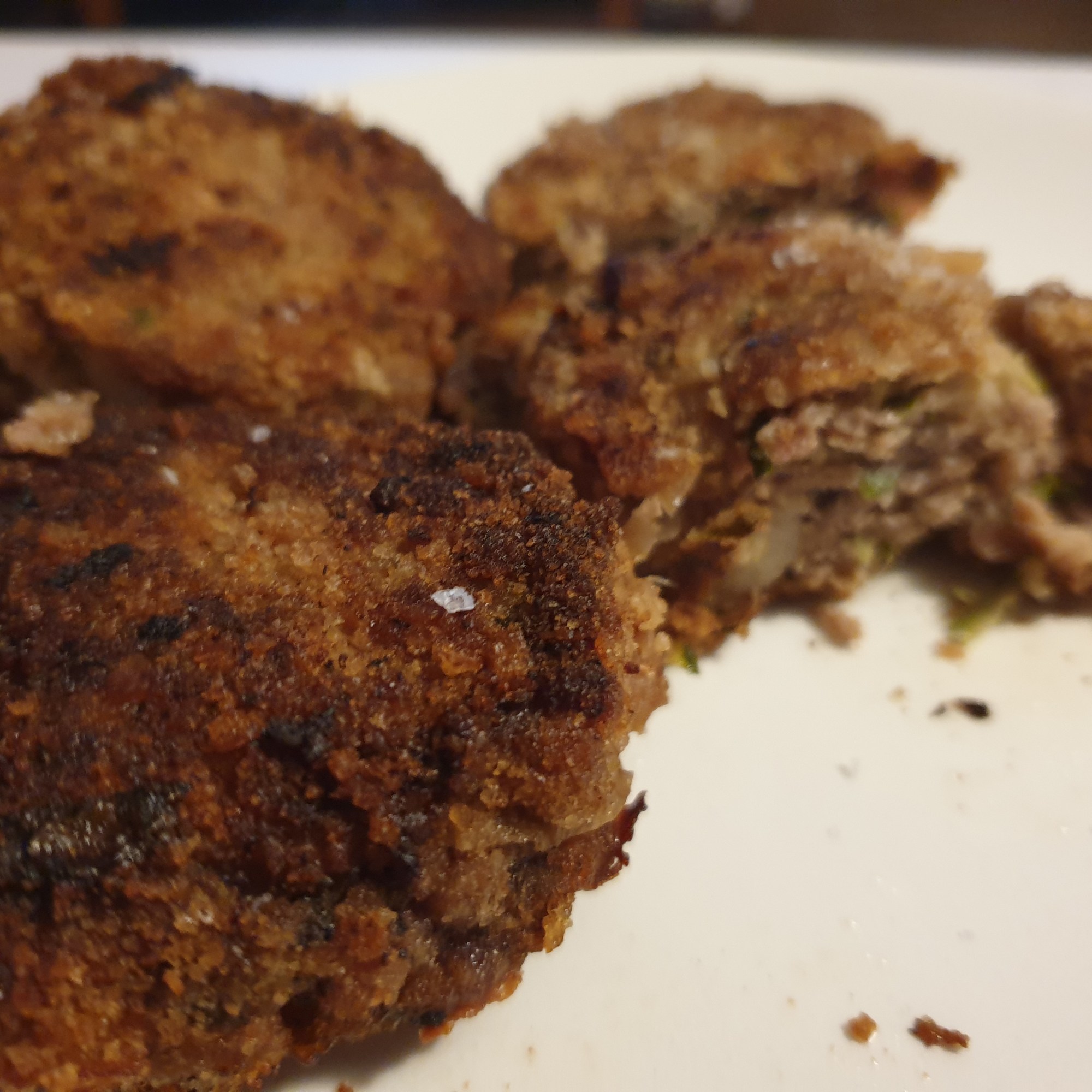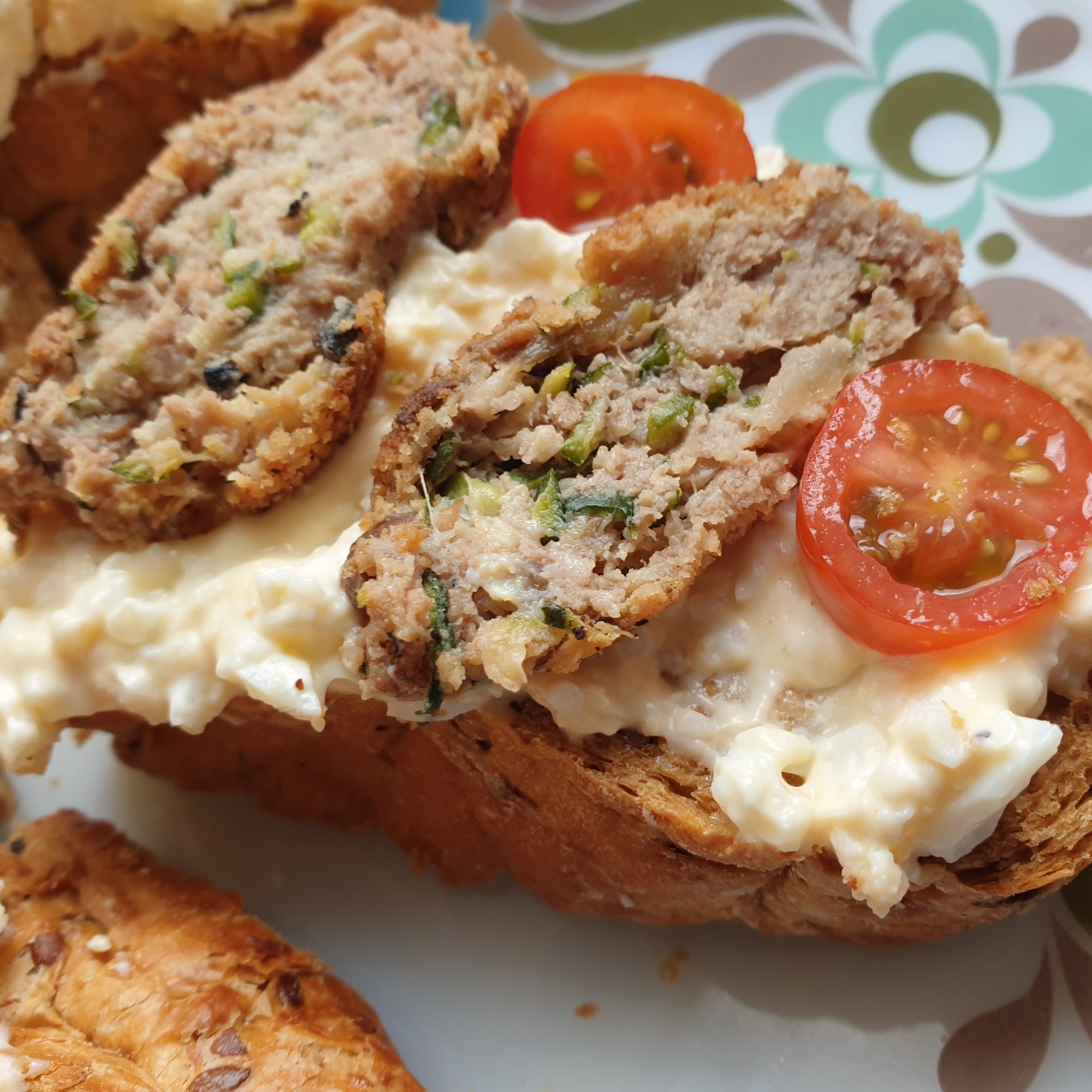- Pierogi with meat filling is one of the most usual ways my Mama made pierogi.
- The meat was usually cooked pork, which had been left from a roast or gulasz the day before.
- Below are instructions for cooking the pork from scratch in case you do not have any cooked pork.
- At Christmas time the meat could have been chicken, should any have been left.
Ingredients
- 300g shoulder or spare rib pork
- 1 onion
- 1 egg yolk
- 1 tablespoon of dried breadcrumbs
- Approx 250 ml of chicken stock – can be from stock cubes
- Butter & oil to fry the onion
- Salt & ground black pepper to taste
Method
- Pre heat the oven to GM 3 – 1600C
- Put the pork into a small casserole dish and cover it with the stock and put on the lid.
- Put the dish in the oven for at least 1 hour, depending on the meat you might need longer.
- Cook the meat until it is tender and can be broken up with a fork and most of the liquid has been absorbed.
- Allow the meat to cool.
- You can mince the meat but I find that if you cook it long enough you do not need to, you can just chop it with a sharp knife .
- Chop the onion finely and fry it till it is soft and golden, allow it to cool.
- Mix thoroughly together: the meat, onion, yolk and breadcrumbs and then add salt and pepper to taste.
- *
- Serve with melted butter or
- Onions fried in butter or
- Fried bacon bits – skwarki.
-
Make the pierogi in the usual way – instructions are given below.
-
Ingredients – Dough
- 500g pasta flour or strong flour or plain flour & 2 tablespoons of fine semolina
- 300ml water
- 1 – 2 tablespoons oil – sunflower or light olive
- ½ teaspoon salt
- 2 egg yolks
- *
- Melted butter for serving or chopped onions cooked in butter.
Method – Dough
- In a jug or bowl mix together the water, oil and the yolks.
- Put the flour and salt into a large bowl and make a well in the centre.
- Pour in the liquid from the jug and initially use a knife to mix this into the flour and then use your hands to mix the liquid and flour to get a ball of dough.
- Turn this out onto a floured board and knead the dough for a few minutes until you have a smooth ball.
- Cut the dough into quarters.
- On a floured board roll out a quarter at a time until you have a sheet of thinly rolled dough.
- Now prepare a large tray and cover it with a clean tea towel and sprinkle this with flour.
- Have a large surface such as a tray covered with a cotton or linen cloth which has been lightly floured ready and place the sealed pierogi on this until they are all made, do not let then touch each other.
- I cut them out using a 7 cm diameter cutter.
- I have noticed some people make them larger – I will try this out soon.
- The excess dough can be re-mixed and rolled out again.
- Around a half tablespoon of filling is put on each circle and then they are folded over and the edges pinched together to make a good seal.
- You learn from experience how much filling to put in as too much will make it hard to seal them and if not properly sealed they will burst on boiling.
- Do not worry if you have a few mishaps – it still happens to me even with experience – it is hard to salvage one that has gone wrong – just accept that there will be a few that you do not cook.
- *
- To cook the pierogi, use a large pan of boiling water to which you have added some salt and a drizzle of oil.
- Drop the pierogi in one by one and allow them to boil. I usually do about 6 to 8 at a time (I only do 6 at a time if using frozen ones).
- As they cook they will float to the surface, let them boil for 2 to 3 minutes, (a bit more if they were frozen*), and
- Then remove them with a slotted or perforated spoon and put into a colander above a pan for a few seconds to drain and serve.
- Continue boiling batches in the same water.
- If you want to make all the pierogi to serve together then you need to get a large shallow dish.*
- Put in the pierogi and add melted butter.
- Keep the dish warm in a low oven.
-
- *I often open freeze them for later.
-
